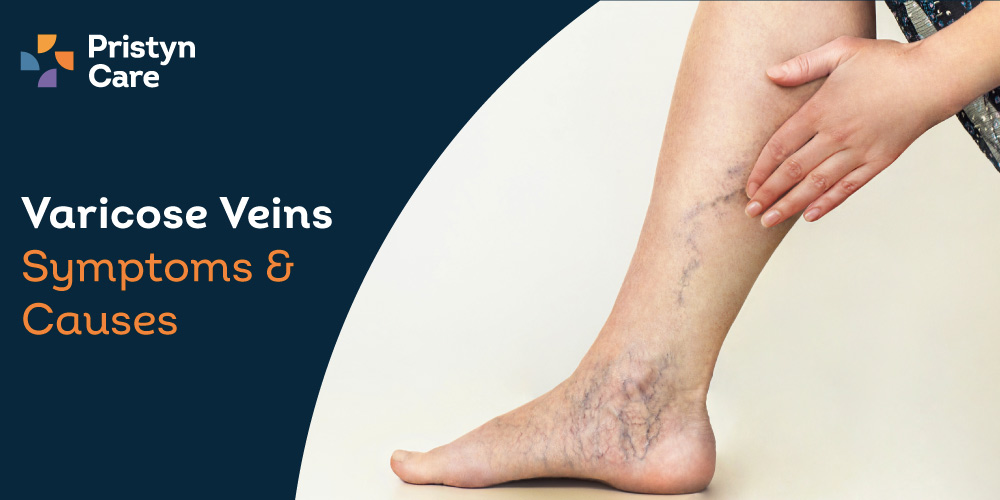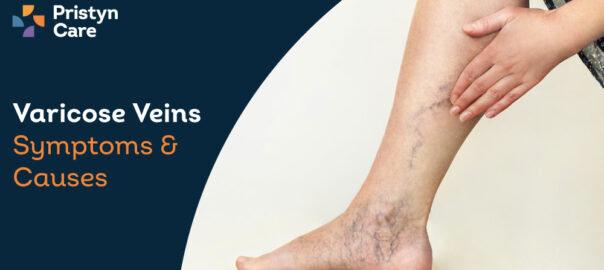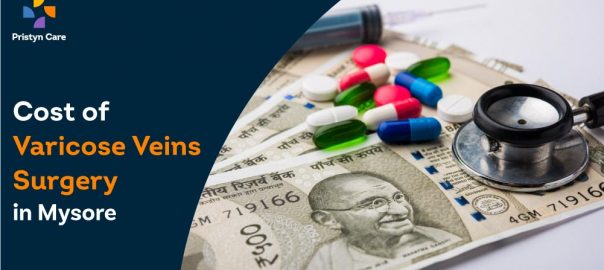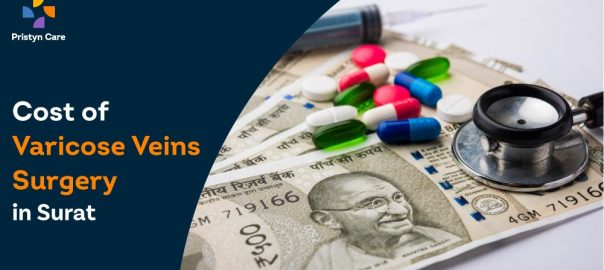![]() Views: 911
Views: 911
What Causes Varicose Veins?
Varicose veins are a very common condition that affects millions of people worldwide. They are enlarged and twisted superficial veins that often appear swollen and raised on the skin. The veins are bluish-purple in color and often cause pain, discomfort, and cosmetic concerns.
Dedicated Support at Every Step!
Our Doctors are available 24 hours a day, 7 days a week to help you!
Normally, these veins appear when the vein walls and valves become weak and unable to maintain proper blood flow. The inability to maintain proper blood flow results in the pooling of blood, which stretches the vein walls and creates a bulge that is visible on the skin.
Today, we will shed light on the causes & treatment of varicose veins so that we can gain a better understanding and take the necessary steps to manage them. Let’s learn what causes varicose veins.
Table of Contents
Common Causes of Varicose Veins
To comprehend the causes of varicose veins, it is important first to understand the working of veins. Veins are the blood vessels that carry deoxygenated blood to the heart from various body parts. They have one-way valves that prevent blood from flowing backward. But when these valves become weak or damaged, the veins malfunction, and blood starts to accumulate, leading to the enlargement of the affected veins.
Some common varicose veins causes are explained below:
- Chronic Venous Insufficiency: This condition is the primary cause of varicose veins. It occurs when the vein valves inherently become weak and lose their ability to circulate blood properly. It can develop in deep, superficial, and perforating veins. In many cases, varicose veins are a sign of this disorder, indicating that the condition will further progress and may even cause skin discoloration, edema, and ulceration in the affected area.
- Heredity: Family history is a significant factor in the development of varicose veins. If your parents or close relatives have had varicose veins, you have a higher risk of developing them as well. This suggests that genetic factors play a role in weakening the vein walls and valves. The structural integrity of veins can be influenced by inherited traits, making them more prone to stretching and dilation. Weaker veins and valves are less efficient in preventing blood from flowing backward, leading to the pooling of blood and the development of varicose veins.
- Age: As we age, our veins naturally lose elasticity and become less flexible. The aging process affects the strength and resilience of vein walls and valves. Over time, this can contribute to weakened valves, and the blood can flow backward and accumulate in the veins, causing the veins to enlarge and become varicose.
- Prolonged Standing or Sitting: Occupations or activities that involve prolonged periods of standing or sitting without sufficient movement can hinder proper blood circulation and contribute to the development of varicose veins. When we stand or sit for extended periods, the force of gravity makes it more challenging for blood to flow upwards toward the heart. This increased pressure on the veins of the lower extremities can cause blood to pool and veins to stretch, leading to the formation of varicose veins.
- Gender: Varicose veins tend to affect women more often than men. Hormonal fluctuations throughout a woman's life, such as during pregnancy and menopause, can influence the development of varicose veins. Pregnancy, for example, increases the volume of blood in the body and puts additional pressure on the veins. Hormonal changes during pregnancy can also affect the elasticity of vein walls and valves, making them more susceptible to stretching and varicosity. Similarly, hormonal changes during menopause can contribute to the weakening of veins.
- Obesity: Excess weight and obesity exert increased pressure on the veins, making it more difficult for blood to circulate effectively. The added strain on the veins can weaken the vein walls and valves, resulting in poor blood flow and an increased likelihood of varicose veins. Maintaining a healthy weight is important in reducing the risk of developing varicose veins and promoting overall vein health.
As you can see, there are numerous causes of varicose veins, and all of these factors combinedly increase the risk of developing this condition for an individual.
No Cost EMI, Hassle-free Insurance Approval
What Causes Varicose Veins in Legs?
While varicose veins can develop anywhere in the body, it mostly appears in the leg due to the following reasons:
- Effect of Gravity: The influence of gravity plays a significant role in the development of varicose veins. The veins in the lower extremities face a bigger challenge of overcoming gravity to return the blood back to the heart, unlike other body parts. The legs have to work against gravity to push the blood in an upward direction. This constant struggle makes the legs more prone to developing varicose veins.
- Increased Pressure & Weight-Bearing: Everybody knows that the legs bear the weight of the entire body, which exerts additional pressure on the veins. This increased pressure can impede the proper functioning of the valves within the veins, leading to the pooling of blood and the formation of varicose veins. Furthermore, the constant pressure on the legs during activities like standing and walking further exacerbates the pressure, making the legs more susceptible to the condition compared to other body parts.
Besides the legs, varicose veins also occur in other body parts, such as the pelvis region or the esophagus (esophageal varices).
What Causes Varicose Veins During Pregnancy?
As mentioned above, varicose veins are more common in women, especially during pregnancy. This is mainly due to the physiological changes a woman goes through during the pregnancy period. Other factors that contribute to the development of this condition are given below:
- Increased Blood Volume: During pregnancy, the body produces a higher volume of blood to support the growing fetus. This increased blood volume places additional pressure on the veins, including those in the legs causing itching. The added strain on the veins can cause them to stretch and become varicose.
- Hormonal Changes: Pregnancy triggers hormonal changes in a woman's body, particularly an increase in the hormone progesterone. Progesterone relaxes the walls of the blood vessels, including the veins, to accommodate the increased blood volume and support the growth of the baby. However, this relaxation of vein walls can also lead to decreased vein tone and weakened valves. Weakened valves are less effective at preventing blood from flowing backward, resulting in blood pooling in the veins and the development of varicose veins.
- Uterine Pressure: As the uterus expands to accommodate the growing baby, it places pressure on the veins in the pelvis and lower abdomen. This pressure can impede the proper flow of blood from the legs back to the heart, leading to the pooling of blood in the veins of the legs.
Besides these factors, some additional factors, such as multiple pregnancies, advanced maternal age, obesity, etc., can also cause varicose veins during pregnancy. The good thing is that, in most cases, the symptoms improve after childbirth. However, if the symptoms persist, the woman might need help from a vascular specialist to get proper relief.
Varicose Veins Management Options
It should be understood that some risk factors for varicose veins are beyond our control. Thus, it might be inevitable for some people to develop varicose veins. However, there are several measures that can be taken to reduce the risk and manage the condition. These measures include the following:
- Exercise regularly, such as walking or swimming, as it promotes blood circulation and helps to keep the veins healthy.
- Maintain a healthy weight to reduce the strain on the veins and lower the risk of varicose veins.
- Elevate your legs whenever possible above the heart level to make it easier for the veins to pump blood in the upward direction and reduce the effects of gravity.
- Avoid prolonged sitting or standing, even if your job requires it. Take regular breaks, move around, or stretch your legs.
- Wear compression stockings of the appropriate size to gently compress the veins and aid them in circulating blood to the heart.
- Avoid wearing tight clothes as they can restrict the blood flow and increase the risk.
- Eat a healthy diet rich in fiber and low in salt to reduce swelling and get relief from the symptoms.
Be regular in these practices, and gradually, varicose veins symptoms will improve. If not, it’ll be best to consult a vascular specialist who can provide the best treatment for varicose veins.
Get Advanced Varicose Veins Treatment at Pristyn Care
If you have been experiencing leg pain and notice that the veins are bulging and swollen, don’t delay the treatment and get in touch with Pristyn Care. We provide both surgical and non-surgical treatment for varicose veins using traditional and modern techniques, such as sclerotherapy, laser treatment, endovenous laser ablation, vein ligation and stripping, etc.
Pristyn Care houses a team of experienced vascular surgeons who are well-trained and skilled in minimally invasive varicose veins treatment. The most suitable treatment method is chosen by the doctor after a thorough diagnosis and evaluation of the underlying causes of varicose veins. Give us a call and book your consultation to discuss the treatment options in detail.
FAQs around Varicose Veins
No, usually, low blood pressure doesn’t cause varicose veins. There are risks when the blood pressure is high, which makes it difficult for the veins to circulate blood.
Generally, varicose veins don’t cause DVT or deep vein thrombosis. However, if the condition develops due to chronic venous insufficiency, there may be a higher risk of developing a clot in the deeper veins, resulting in DVT.
Varicose veins can worsen if you fail to address the factors contributing to the condition. Now that we know what causes varicose veins, it’ll be helpful to manage the hormonal levels, exercise regularly, eat a healthy diet, and maintain a stable and healthy weight.










